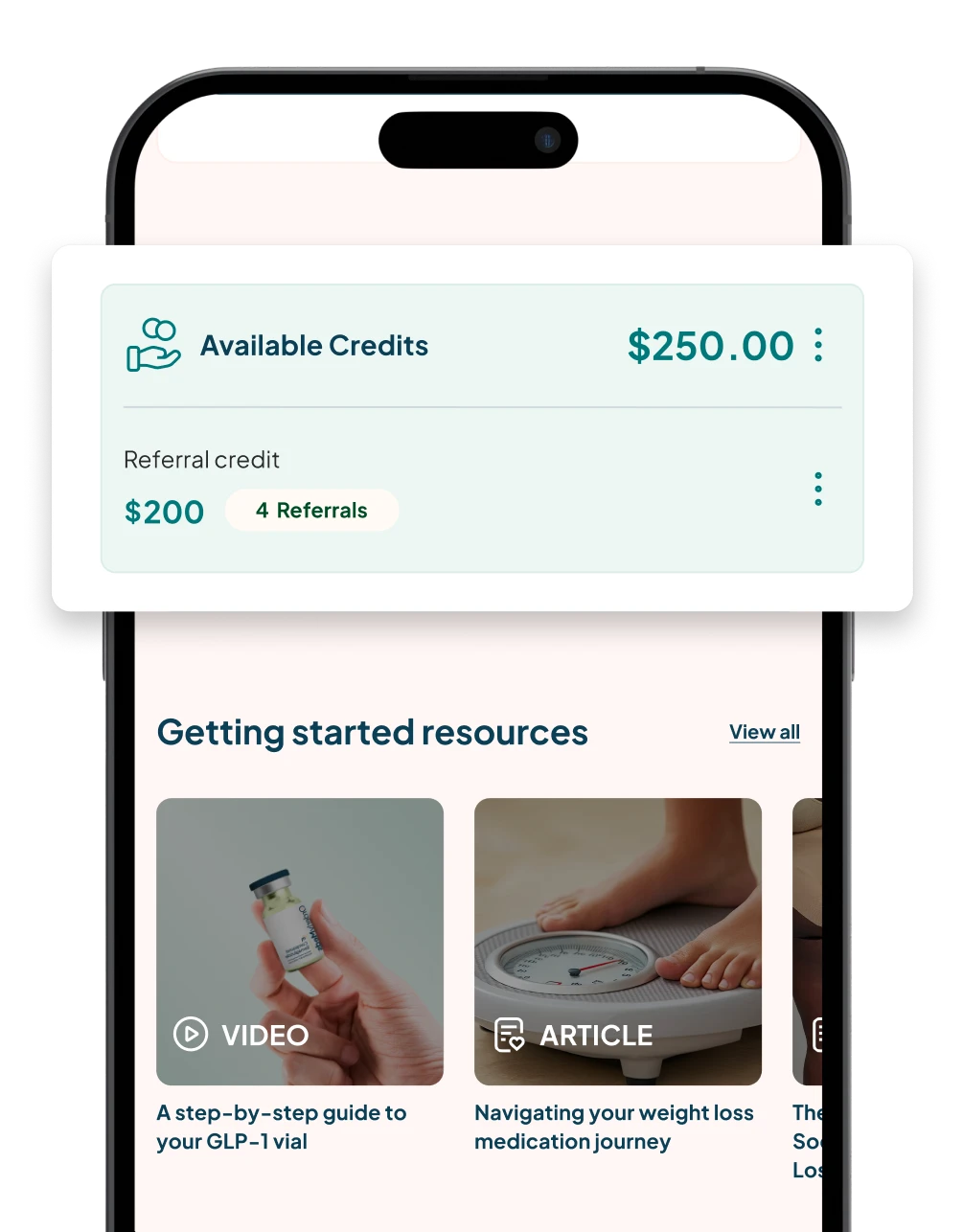Written By Dr. William Yi, OrderlyMeds Medical Expert
Welcome and Background
Congratulations on joining the large and ever-expanding group of Americans who have decided take action against obesity in our country! At present, about 6% of Americans take a GLP-1 agonist medication. Sadly, due to the crisis of obesity in our country, that number continues to expand. Luckily, these medications have been in use for many years and, therefore, have a longstanding record of safety dating back to 2005, when they were first introduced to assist in controlling blood sugar in diabetics.
Here are some useful guide points as you begin this journey:
Side Effects
Nausea & Vomiting
When it comes to safety, it’s important to understand how GLP-1 agonists work. These medications slow down the movement of food through your stomach and intestines, helping you feel full for a longer period. As a result, you may find yourself eating less at each meal and feeling hungry less often.
However, some people experience nausea or vomiting when they eat the same amount they used to before starting the medication. To help alleviate these symptoms, consider eating smaller portions more frequently throughout the day.
Nausea and vomiting affect about 10-50% of users, but fortunately, these side effects typically improve after the first two weeks as your body adjusts to the medication and its impact on your gastrointestinal system.
Constipation & Diarrhea
These medications can slow down the natural timing of your gastrointestinal system, which may lead to some patients experiencing either constipation or diarrhea, or sometimes both. Constipation is a common effect since these medications slow down intestinal movement. However, diarrhea can be unexpected. This may occur because altering the timing of specific parts of the intestines can trigger your body to release a bowel movement, leading to diarrhea.
Typically, these symptoms tend to resolve after about two weeks as your body adjusts to the medication. If you experience diarrhea, it is safe to take loperamide to help manage it, along with increasing fiber intake in your diet and drinking plenty of water. For constipation, options such as milk of magnesia, stool softeners like bisacodyl or Dulcolax, and lubricants like mineral oil are safe to use.
Abdominal Pain
Abdominal pain is a commonly reported side effect of these medications, affecting approximately 57% of users. Most individuals experience symptoms such as bloating or crampy abdominal pain, which result from the slow emptying of the stomach and intestines.
In very rare cases, patients may develop a condition known as pancreatitis, which is inflammation or irritation of the pancreas. Pancreatitis is characterized by sharp abdominal pain located just beneath the middle of the sternum, and it can feel as though the pain radiates to the back. Many patients describe the sensation as if someone is stabbing them in the chest with a knife. If you experience this type of pain, especially if it is accompanied by fevers, it is important to contact a medical provider or visit your local emergency department. While pancreatitis can be treated with simple IV hydration, a medical professional should make that determination.
Infrequent Issues with GLP-1 Weight Loss
Patients who lose a large amount of weight quickly may develop gallstones and alopecia. While gallstones themselves are not immediately concerning, they can lead to abdominal pain in the upper right portion of the abdomen. If you experience such pain, especially if accompanied by nausea and vomiting, it is important to consult a medical professional.
Alopecia, or hair loss, is not directly caused by the use of GLP-1 agonists; however, it can occur in patients who do not consume enough protein. Hair is primarily composed of keratin, which is a type of protein. When patients do not ingest sufficient protein, their hair follicles may enter a resting phase, leading to hair shedding. The good news is that increasing protein intake can help reverse this effect.
Nutrition
Protein. Protein. Protein.
One of the most important pieces of nutritional advice is to ensure you consume enough protein while reducing your calorie intake. When using GLP-1 agonists, you may naturally eat fewer calories. To maintain adequate nutrition, it’s essential to increase the proportion of your calories that come from protein. Aim for at least 60 to 80 grams of protein per day.
Fortunately, achieving this goal doesn’t have to be difficult. For instance, a typical chicken breast weighs around 6 ounces and contains about 10 grams of protein per ounce. Consuming just one chicken breast a day can help you meet your protein needs!
If you’re finding it challenging to get enough protein due to feeling full or experiencing nausea during meals, consider incorporating various protein shakes into your diet. Additionally, we recommend joining the OrderlyMeds Facebook community, where you can connect with others and share experiences and tips for managing your nutrition.
Vitamins
When you decrease the number of calories you consume and limit the variety of foods you eat, it’s essential to ensure that your body receives all the necessary vitamins and minerals it needs. Fortunately, this can be easily accomplished by taking a single multivitamin each day. In fact, even if you are not on a weight loss journey, a daily multivitamin may still offer significant benefits.
Diet and Exercise
GLP-1 agonists can help you lose, on average, about 16-20% of your body weight over the course of two years. However, you may experience greater weight loss if you also adopt healthy eating habits and follow an exercise regimen while taking these medications.
Your exercise routine should include both aerobic and resistance training. These types of exercise not only aid in weight loss but also improve your body’s composition, making it easier to maintain the weight loss achieved with GLP-1 agonists. Although pharmaceutical companies recommend using these medications for life, recent studies indicate that when combined with a proper diet and exercise program, the weight loss achieved after two years can be maintained indefinitely, as long as you continue with these healthy routines.
Tips and Tricks
Goal Setting
Perhaps nothing is more discouraging in your weight loss journey than not seeing results like others do. It’s important to understand that those who achieve impressive results are more likely to share and promote their successes on social media, while those with more average results tend to be quieter about their progress. However, aiming for average results is actually what you want! Rapid weight loss can be unhealthy and may lead to unwanted side effects, such as hair loss and gallstones, as mentioned previously.
To help you gauge your progress, please refer to the graph from a comprehensive GLP-1 agonist study:
At 8 weeks, most individuals typically notice about a 4% change in body weight. For example, if a patient weighed 200 lbs at the start, they would, on average, have lost around 8 lbs by the two-month mark. If you have experienced significant weight loss in the first week, that’s great! However, it’s important to understand that weight loss with these medications is designed to occur over a longer period. The most meaningful results should really be assessed at the two-year mark.
Don’t focus on short-term losses or gains; instead, view this as a two-year journey that lays the groundwork for lasting change in your life.
Plateaus
It’s important to note that many patients using GLP-1 agonists for weight loss often experience plateaus in their progress. While these medications can lead to sustained weight loss over weeks or months, there may come a point where weight loss stalls. These plateaus are common and are frequently caused by adjustments in your body’s metabolism or changes in your diet.
Plateaus can occur at any time, but they typically happen between 9 to 12 months of treatment for most patients. When you hit a plateau, you have a couple of options: you can either increase your medication dosage or more accurately track your diet and exercise routine to better understand your calorie intake and expenditure. While increasing the dosage may seem easier, tracking your diet will provide valuable insights into the adjustments you may need to make.
Groceries
Although having a nutritionist or even personal chef would be an asset in our weight loss journeys, most of us can’t afford such luxuries. For these individuals we’ve provided a few general tips and tricks when it comes to shopping for groceries and setting up our at-home diets.
- Don’t shop while hungry.
- Stick to the list
- Shop often and buy a little at a time. Bulk shopping leads to buying more foods with preservatives and artificial ingredients. Though you may have to spend more time at the grocery store, you’ll eat healthier.
- Learn to read food labels. Even better, buy foods that don’t have food labels (ie. Fresh produce, butchered proteins)
- Choose low-calories dressings such as Greek yogurt, horseradish, or salsa
- Show around the perimeter of the grocery store (the middle aisles primarily hold foods with preservatives and artificial ingredients)
- Buy single serve items to assist in portion control
- Try the local farmers market for groceries
- Try a delivery meal plan if you’re finding it too difficult to stick to a diet plan
Remember, you are not alone on this journey—there is a whole community of people walking this path alongside you. As always, don’t hesitate to reach out to our medical team with any questions or concerns. We’re here for you every step of the way!






